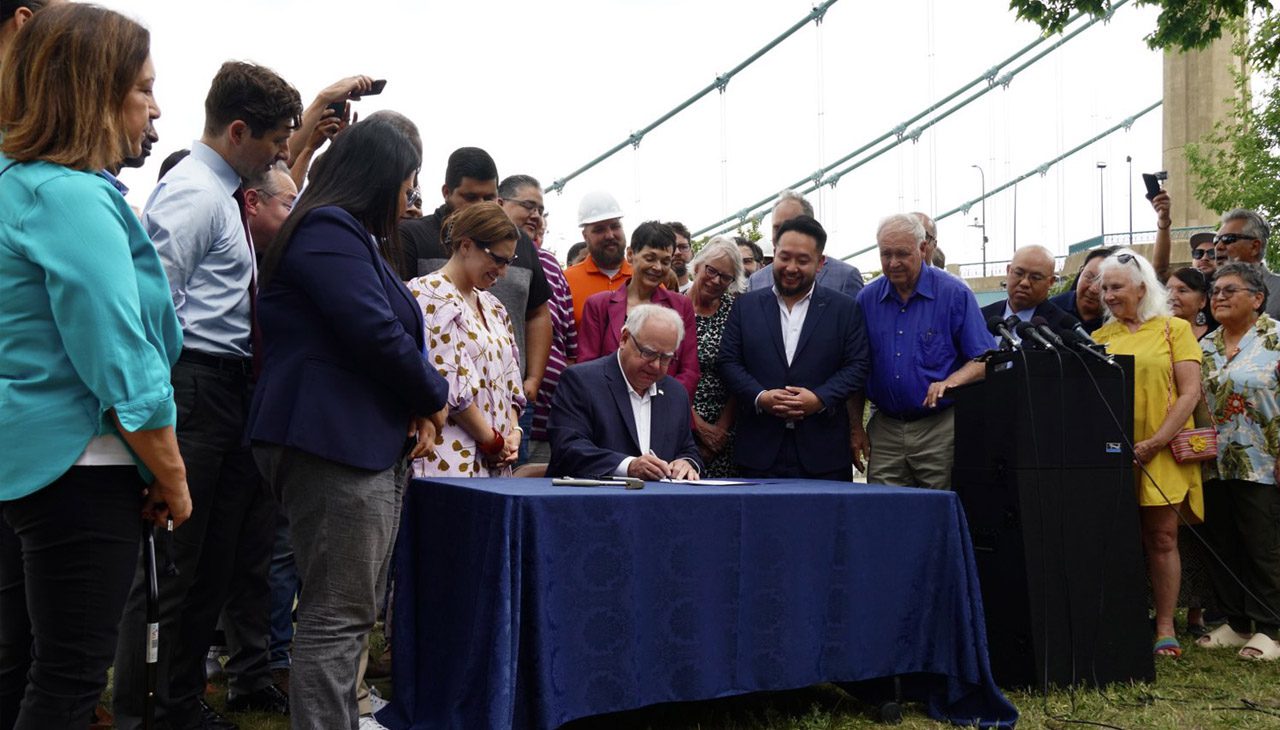$2.6 billion infrastructure bill will go toward roads, bridges
On Thursday, Governor Tim Walz signed the $2.6 billion infrastructure bill, in what the administration says is the largest in state history. Governor Walz held a press conference and signed the bill in front of the Hennepin Avenue Bridge, along the Mississippi River. Funding for reconstructing the bridge is including in the bill.
“This infrastructure bill is about making life safer and easier for Minnesotans and delivering on the most basic things that government should provide – reliable roads, clean drinking water, and sound infrastructure to support safe, healthy communities,” Governor Tim Walz said in a statement. “With this investment, we’re going to rebuild our roads and bridges, repair fire stations and water treatment plants, and upgrade our veterans homes, fish hatcheries, and flood mitigation systems – all while creating good-paying jobs for Minnesotans. This is how we put a down payment on the future of our state.”
Watch Full Press Conference
The $2.6 billion infrastructure bill will help pay for hundreds of infrastructure projects that will create good-paying jobs and bring long-term benefits to communities across the state, including:
- $403 million for transportation infrastructure, including local roads and bridges
- $501 million for water infrastructure projects
- $78 million for the Hastings Veterans Home
- $20 million for the Waterville fish hatchery
- $72 million for bus rapid transit
- $72 million for public housing rehabilitation
- Over $120 million for community-based organizations and nonprofits
“From clean drinking water and strong community centers to safe housing, I am so thrilled by the progress and prosperity held in this infrastructure package,” said Lieutenant Governor Flanagan. “By making historic investments in communities – particularly Black, Brown, and Native communities – that have often been left out of public investment, this bill makes equitable investments, so no community is left behind. These projects are what make Minnesota the best place to live, work, and raise a family.”
